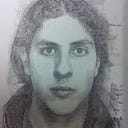Achieving Dynamic Camera Movements: Look At Aim and Follow Body (Binding Mode Settings) Cinemachine — Unity3D
Two key components that enhance camera movements are Look At Aim and Follow Body, both of which offer flexible binding mode settings. In this article, we will explore the Look At Aim and Follow Body components in Cinemachine, focusing on their binding mode settings, and discuss how they can be utilized to achieve dynamic camera movements and enhance the overall visual experience in Unity3D.
The Look At Aim component in Cinemachine allows developers to create precise camera aiming and targeting functionality. It enables the camera to smoothly track and follow specific game objects or points of interest, enhancing gameplay visuals and directing player attention.
Here is VCam3 aiming at different objects without the physically follow that VCam1 uses to follow the cube.
The Follow Body component in Cinemachine enables developers to simulate realistic camera movements and physical behaviors. It adds a sense of dynamism and immersion to the player’s experience, enhancing the overall visual aesthetics.
Binding Mode Settings for Follow Body:
Lock To Target: In this mode, the camera strictly follows the target object, maintaining a fixed relationship in terms of orientation and distance. It ensures that the camera’s aim is constantly locked onto the target, creating a direct and focused perspective.
Lock To Target With World Up: Similar to Lock To Target, this mode maintains a fixed relationship between the camera and the target. However, it allows developers to define a specific world up direction, ensuring the camera maintains a consistent orientation regardless of the target’s movement.
Lock To Target No Roll: In this mode, the camera follows the target object while restricting any rolling motion. This is useful for maintaining a level horizon and preventing unwanted camera rotations around the target.
All the “Lock To Target-” settings are very similar. They do have their percs that work better in different situations. World Space and Simple follow offer a broader variety of camera bindings.
World Space: In this mode, the camera’s up direction aligns with the specified world up vector, maintaining a consistent orientation relative to the global coordinate system. It allows for smooth camera movements while keeping the camera’s position and orientation in relation to the world, rather than the target object. This can be useful when you want to create cinematic camera movements that smoothly follow the action in a scene while keeping a consistent world orientation.
Simple Follow with World Up: In this mode, the camera follows the target object while keeping a constant relationship with the world up vector. It allows for smooth camera movements that dynamically respond to the target’s motion, while ensuring the camera’s up direction remains consistent and independent of the target’s orientation.
Fine-Tuning and Experimentation: To achieve the desired camera movements and behavior, developers should experiment with the various binding mode settings:
- Adjust parameters like damping, tracking speed, and offsets to fine-tune camera responsiveness and smoothness.
- Consider gameplay dynamics and specific scenarios to determine the most suitable binding mode settings for each situation.
Mastering the binding mode settings of Look At Aim and Follow Body components enables developers to craft immersive gameplay experiences that engage and captivate players. By experimenting with different settings and leveraging the flexibility of Cinemachine, developers can create dynamic camera movements that elevate the quality and immersion of their Unity3D projects.
